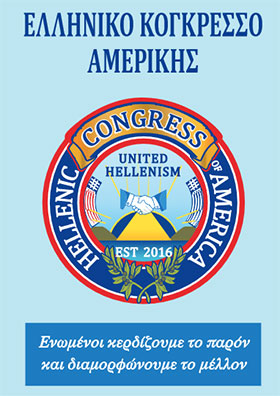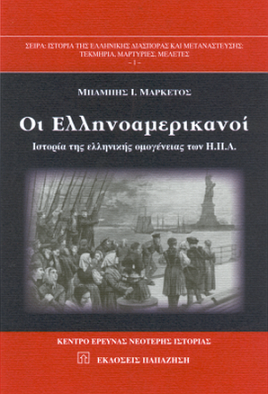A voyage to Imbros The continuing Hellenic presence on Imbros is a credit to the pride of its Greek villagers

Since reading about the role of Imbros in the Gallipoli campaign, I’ve wanted to make a pilgrimage to this northern Aegean island. The fact that it has a deep Hellenic history was all the more reason to make the trip.
I travelled to Imbros by car, driving the beautiful coastal road along the Gallipoli peninsula. The ferry to Imbros (now named Gökçeada) takes about one-and-a-half hours. Being in the northern Aegean, the crossing can be windy and a bit choppy – even in the large Gestas ferry that takes you there. But you are more than compensated by the views.
As you cross these choppy waters, with the wind blowing hard, one can imagine what it must have been like for all those Anzacs crossing here in 1915. Starting their voyage to Anzac Cove at Lemnos, the Anzacs made their way to Imbros’ waters, then transferring to smaller vessels for the voyage to the beachhead in the early hours of 25 April. Even if the waves had been small and the wind low, the journey to the silent Gallipoli coast must have seemed a long one.
As you arrive at the little harbour near Kalekoy on the north western side of Imbros and begin your journey inland, what strike you are the many mountains and green valleys within the island.
The main town on Imbros is called Gokzeada town (formerly known Panagia). It’s a small town but it has all the supplies you might need, including the island’s only petrol station. While on Imbros I stayed at the Anemos Hotel, boutique accommodation conceived by a Greek travel photographer. Its locally-made tomato jam is to die for.
But if you want to walk in the footsteps of the Anzacs on Imbros, there are two places you must go.
The first is Kalekoy village itself. Above this village – with its many restored historic traditional village homes – lies the Kastro. The ruins of this Byzantine fortress dominate the surrounding landscape, attracting visitors, as it did in 1915, 100 years ago.
There is a series of photographs taken of the Kastro by Allied soldiers in 1915. Travelling over the island from their camp on the eastern side, many Allied soldiers seem to have made the journey. Photographs from the time show these soldiers hiring and riding donkeys, as well as taking photographs of the ruins and the sea beyond. It is likely that the Australian war correspondents Charles EW Bean and Philip Schuler came this way.
As you make your way up through the village, you will pass the lovely little Church of Agia Marina, restored in 1949. Its structure includes old Byzantine columns and a unique bell-tower at the front. Approaching the Kastro itself, you will be struck by how little it has changed. Apart from one feature which has collapsed from erosion, the Kastro is an impressive feature worth the visit. The summit also gives amazing clear views of Samothraki to the north.
The other site to visit is on the eastern end of the island, about 20 minutes’ drive. This is Kephalos Bay (now called Aydinick Burnu). Directly opposite the Gallipoli peninsula, it features a long protective arm of land to the east, creating a large expanse of deep protective waters. On the shoreline is a large half-moon shaped area of flat, rising land.
In March 1915, these features of Kephalos Bay made it the perfect location for the advanced supply base for the Gallipoli campaign. Complementing Lemnos’ role as the main field base for the campaign, Kephalos Bay was soon filled with warships. Though not as large as Lemnos’ Mudros Bay, Kephalos Bay and the surrounding waters provided the perfect berthing location for the hundreds of Allied ships in transit from Lemnos and Gallipoli.
The shoreline was soon dotted with the tents of the Allied camp, rising to meet the then small Greek village resting among the trees as the land rose to meet the surrounding mountains.
The camp encompassed soldiers’ tents, casualty clearing stations performing major surgery and a British field hospital, administrative buildings and the other requirements of a supply depot. It would also be the location of General Headquarters of the Allied force commander for Gallipoli, General Ian Hamilton. Troops like the Royal Naval Division would return from the fighting on the peninsula for rest and it was from Imbros that the 11th Imperial Division embarked for the August offensive at Suvla Bay.
A number of Australian Army units were based here, including the 1st Australian Field Bakery which supplied fresh bread to the diggers on the peninsula, transported by the wagons of the Australian Army Service Corps. One wonders if they also made lamingtons or scones! New Zealanders were there too – with airmen at the air base for the No. 3 Squadron Royal Naval Air Services that was located here – along with one at nearby Tenedos.
Photographs reveal the life of the camp – the bakers cooking, pilots inspecting their planes, sailors walking ashore, soldiers practicing and officers reviewing troops. While there are few if any physical remains of the Allied presence in 1915, it is easy to view the bay and its shoreline and imagine the host that was assembled and lived there for nearly a year.
There is a lot of evidence of the local Greek residents supporting their new visitors from afar. Photographs show temporary shops erected to service the needs of the Allied troops – just as occurred on nearby Lemnos. One photograph shows one of these shops proudly flying the Greek flag – significant given Imbros’ joining with Greece only three years before.
One famous visitor to Imbros was a young British intelligence officer called Compton Mackenzie. He wrote four detailed volumes of memoirs of his time in Greece during the First World War. The first is Gallipoli Memories. It has many references to Imbros – as well as Lemnos, Tenedos and Lesvos. The one I like most is his description of his joy at discovering yoghurt while on Imbros. Despairing at the bland breakfast fare offered to Allied troops, he joined another soldier in tasting the local alternative on Imbros – yoghurt, most likely sweetened with the lovely local honey.
Just as on nearby Lemnos, Allied soldiers recorded their interaction with local Imbriotes in photographs, creating an enticing record of this meeting of cultures. As well as those based on Imbros, Australian troops returned to Imbros for a few weeks’ rest before returning to Gallipoli. Allied soldiers wandered through the various horio of the island, photographing the buildings and the people as they went, and no doubt enjoying the hospitality to be found in the village kafenion and the pleasure of witnessing local Orthodox church services. One photograph by Private John Rogers of the 6th Battalion shows diggers playing games with local Greek children in January 1916, after the evacuation of Gallipoli.
Despite the effects of the departure of most of the local Greek population in the 1960s, there remains enough of a Greek presence in three Imbros villages to give you a flavour of what the Allied soldiers experienced in 1915.
A visit to Aya Theodoros (now named Zeytinli) is strongly recommended. With its restored traditional houses, Church of Saint George, Greek community hall, village school and many kafenio, it’s well worth a stop. Out of the island’s 350 Greek permanent residents, eighty reside in this lovely little village perched on the side of a mountain.
Arrive around midday and you can order your Greek coffee at either Barba Hristo’s or the Nostos Café! Father Asterios Okoumousis might take you to the church and show you its vibrantly-decorated screens and icons.
Take your time to walk through the streets of the village, as they rise up the hill, admiring the many elegant homes with their balconies that have been faithfully restored. The Greek inscription on the communal water tap is dated 1896. Below lies the large olive grove that once fed the olive pressing factory near the church.
While the village once teemed with 950 Greek residents, its remaining villagers are vibrant and talkative and proud of their home. And they are joined by 2,500 Greek visitors – mostly former residents or descendants of residents – who come in August to be part of the panagiari on 15 August. When I visited the island, the local Greeks were all fasting and looking forward to the coming of Easter.
One villager in Agridia (now named Tepekoy) tells of a local Greek man – now dead – who as a very young boy was named ‘Johnny’ by the Anzacs who came here in 1915. Until he passed away, he was always known as ‘Johnny’ by the villagers.
The contrast to Aya Theodoros is Shinoudy (now named Derekoy). Its remaining 50 Greek permanent residents live in what is largely a ghost town. Wandering the streets of this large village straddling one of the major roads on the island, it is not hard to imagine what it must have been like before 1960 when 3,500 Greeks lived here.
Its deserted cobbled streets would have thronged with people going about their business – maybe taking their washing to the village wash-house, carting their olives from the surrounding olive groves to the olive pressing factory, milling around the village shops and making their way to one of the two large churches in the town.
Many of the houses are large by village standards, two storeys with imposing balconies. Collapsed homes reveal giant clay jars and the means to make tsipouro. Wandering the lanes of the village, your only companions may be the goats, chickens and donkeys which make Shinoudy their home now.
Yet approaching one of the churches, we come across two locals – George and Maria Stamatidis – sitting outside their home. Now living in Thessaloniki, 76-year-old George and 71-year-old Maria return each year for Easter and August. They welcome us into their home, where we are able to enjoy some of Maria’s freshly made spanakopita – one of the best I’ve ever tasted!
Like the other Greek villages, George, Maria and the other returning Greek residents or descendants will swell Shinoudy to 1,000 over summer. And one can see the restored homes – often painted in blue and white – that rest beside the ruins of others.
The continuing Hellenic presence on Imbros is a credit to the pride of its Greek villagers. It is an island heritage that stretches back into Greece’s classical age. And it is a reminder to the world of Imbros 100 years ago when the Anzacs and other Allied soldiers walked these streets and enjoyed the hospitality of its local Greek villages.
For the thousands of Australians and New Zealanders who make the journey to Gallipoli, the side-trip to Imbros will give another insight to the world the Anzacs experienced in 1915. And you will be supporting the descendants of those same villagers who welcomed those young Anzacs onto their beautiful green island in the deep blue of the Aegean.
* Jim Claven is a freelance writer, historian and secretary of the Melbourne-based Lemnos Gallipoli Commemorative Committee. He is researching the Anzac trail on Lemnos and Greece, and has led commemorative tours throughout Greece. He made his trip to Imbros prior to speaking on Lemnos and in Athens as part of the Anzac commemorations in April 2015. He was accompanied by Christos Mingos, an Australian born on Lemnos of Asia Minor descent.
Jim can be contacted by email at jimclaven@yahoo.com.au
Source neoskosmos.com











Σχόλια Facebook